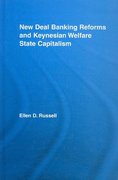l. [BDpts] Explain each of the following ndingst'curiosities briey using concepts from the Probability Judgments and Making It Up parts of the course. (a) Lottery bettors are less likely to choose numbers that have won in recent weeks than numbers that have not won in recent weeks. (b) Residents of New Mexico tend to overestimate the number of deaths in the US per year caused by dehydration, and underestimate the number caused by hypothermia. Residents of Minnesota make the opposite mistake. (c) As a result of being on the dollar menu, the price of 2 apple pies at McDonald's is $1.0. At some McDonald's restaurants, the option to buy one apple pie for $.95 is also available. Nobody buys just one apple pie at these restaurants. Explain why the restaurants might still offer this option. (d) WilliamsSonoma is a mailorder business. It used to sell two kinds of breadmakers, lowerend ($20G) and higherend ($35). They then decided to add an even higherend breadmaker ($429} to their product line, hoping to sell more units. As it turned out, almost nobody purchased this new breadmaker. Explain why WilliamsSonoma decided to keep carrying the $429 breadmaker at a loss. (e) When a mammogram returns a positive result (that is, suggests breast cancer}, the patient undergoes a more thorough test for breast cancer. These second tests often reveal that the mammogram was a false positive, and cancer is actually not present. The patient is then told that the mammogram was essentially a uke, and that she is completely ne. But even after being told that they are fine, women who have had false positive mammograms worry more about breast cancer, and believe they are more likely to get breast cancer, than women whose l'l'lIngl'ElIl WElS DUI1115.1. {f} In a study, students agreed to fill out a short questionnaire for $1.50. At the end of the survey, respondents were offered a chance to exchange their $1.50 for a gift. Some students could exchange the money for a metal zebra pen, and some students could exchange the money for their choice of a metal zebra pen or two plasc pilot pens. Among the students who had two options for exchange, 53 percent chose to keep their money. Of the students who had only one option, 25 percent chose to keep their money. 2. [BDpts] This question asks you to think about narrow bracketing and risky choice using actual reference-dependent utility functions from earlier in the class. Suppose an investor has a uu'lity function given by , where is money and is her reference point in money. Her reference point is her current wealth, normalized to zero. The function v satisfies for == {1 and 111:? 17]: for '3'. T' ?(?j='? ? steps? earn







